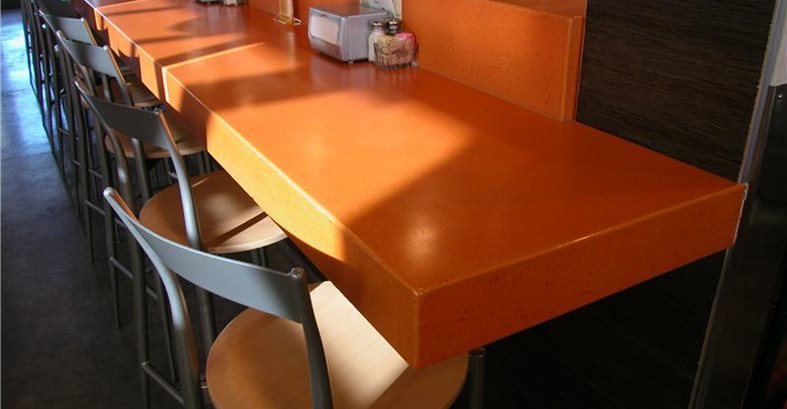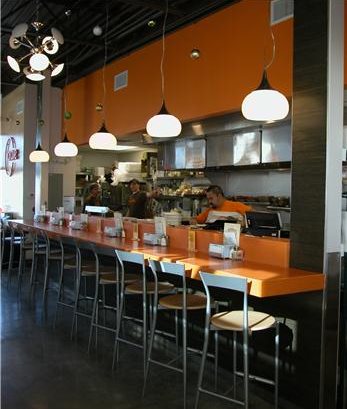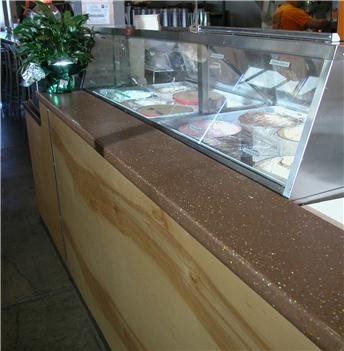The challenge
The owner and architect of the Crave Restaurant in Castle Rock, Colo., were looking for a seamless surface for the dining counter that matched the business's distinctive color scheme and logo. They needed a material that was durable, would resist staining, and would wipe clean easily after serving up the restaurant's popular staples of burgers, fries, shakes and ice cream.
Design goals
Two concrete countertops were custom-made for the project, one for dining and the other for the ice cream service area. In keeping with the fun, hip atmosphere of Crave, the architect wanted a custom color that matched the restaurant's brilliant orange logo. The ice cream counter uses a contrasting brown color, enhanced by pieces of recycled colored glass aggregate. "The glass aggregate increases the overall recycled content, and adds colorful sparkle and interest to the surface," says Allen Miller of Concrete Revolution, a Denver-based company specializing in custom interior residential and commercial decorative concrete. To color both countertops, Miller used integral iron-oxide-based pigments.
Secrets to success
-
Both countertops were hand formed from glass-fiber-reinforced concrete (GFRC). "The mix is very durable and resists cracking well," says Miller. "The look achieved with hand forming is also more consistent and uniform in color."
-
To protect the concrete surfaces from staining and wear, a high-performance resilient sealer with a matte finish was applied. "It is a proprietary formula we created ourselves and have been using for many years. Under heavy use, it only needs resealing every five to seven years," Miller explains.
-
As with many commercial projects, the owner of Crave demanded a fast turnaround time. "This made GFRC an ideal choice, because its production time is faster than our traditional poured concrete technology," says Miller. "The cure time for our hand-formed concrete is also shorter, which means our customers can get their completed pieces installed in a shorter time frame."
Reducing environmental impact
Concrete Revolution strives to reduce the environmental impact of their countertops by using recycled materials and purchasing materials locally. To help reduce carbon dioxide emissions from cement manufacturing, they replace 25% of the cement in their concrete mix with post-industrial VCAS (a by-product of glass fiber manufacturing), making the substitution eligible for LEED points. They also replace a portion of the aggregate with post-consumer recycled materials, such as colored glass.
Contractor
Concrete Revolution, Denver, Colo.
www.concreterevolution.com
See more concrete countertop color options


